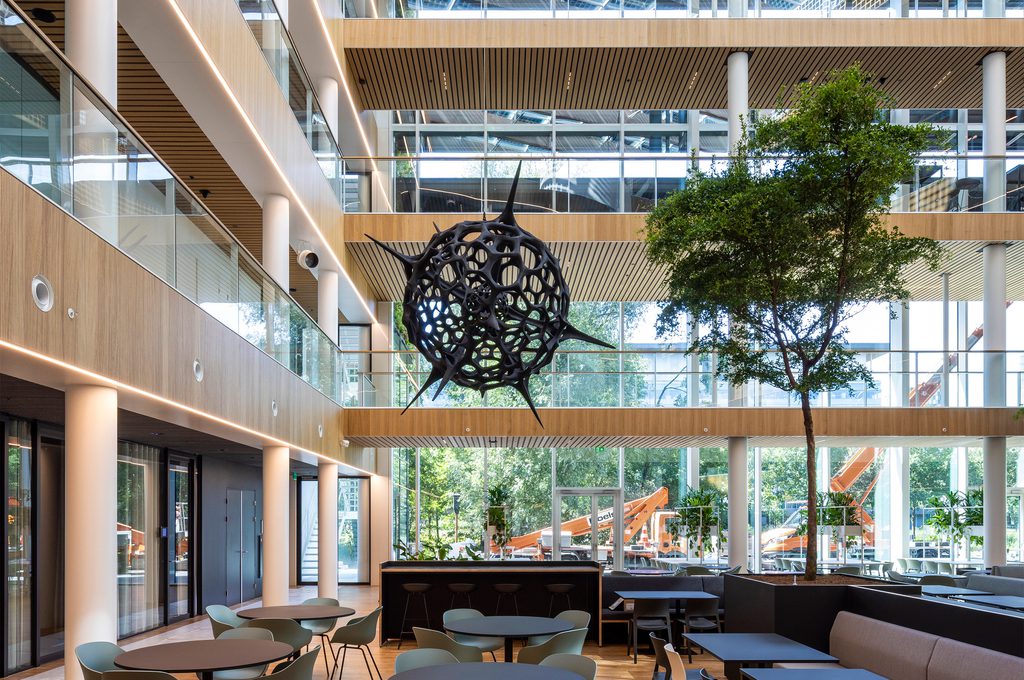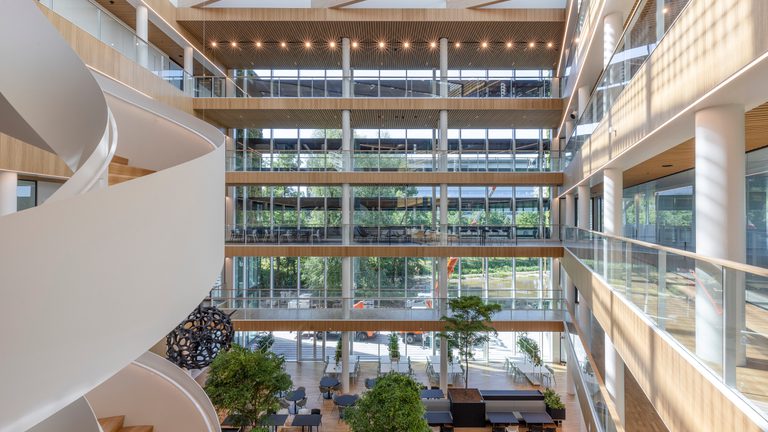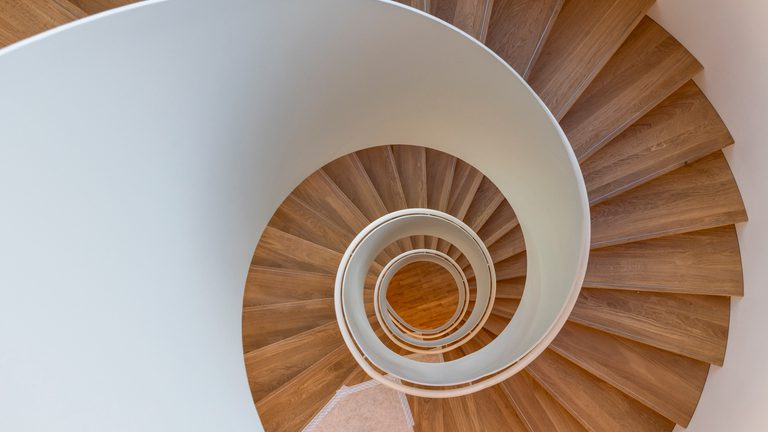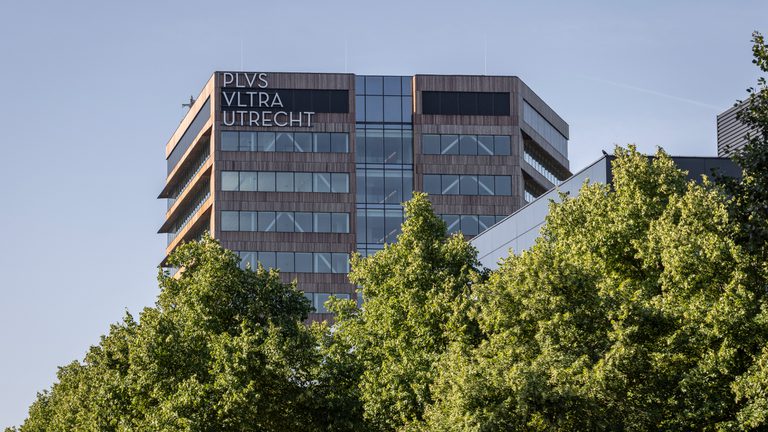In Utrecht, the final touches are being made to the multitenant laboratory building Plus Ultra. This phase, which includes the installation of fixed furnishings, also involves the hanging of a large artwork in the atrium. We interviewed Vincent Mock, the artist behind the piece.
Congratulations Vincent, your work is up! What does it represent?
“The artwork represents plankton, but on an immense scale. In scientific terms, these unicellular organisms are called radiolarians. The fragility of nature starts here—at the very smallest scale. If plankton, or the microorganisms it feeds on, becomes polluted, that pollution ultimately reaches us at the top of the food chain. With this magnification, I aim to evoke a sense of wonder for nature and underscore our immense responsibility towards it. Only under a microscope do you see the intricate details of radiolarians—the near-divine intricacy of their forms. Essentially, I want to make the beauty of the invisible visible.”
The artwork arrived in two separate sections. What is it made of, and what did you do afterwards?
“It originally consisted of 122 individual components, which were glued together. These are 3D prints filled with fire-resistant foam, which also adds structural integrity. A steel cable inside provides additional strength, as does a steel support frame at the top. The surface is made of sand, finished with paint. It entered the building in two segments—one comprising two-sixths and the other four-sixths—which fit precisely through the door. We then spent nearly a week assembling it on-site, and the long spines were attached last. It now hangs relatively low, so it can be viewed from all angles.”
giant plankton for plus ultra utrecht


How does the interaction with the building turn out? Around the atrium, where the artwork is suspended, open galleries run along the sides, and a prominent steel spiral staircase connects four floors.
“Sometimes, the final result of a work turns out better than you could have imagined—this is one of those cases, I think. From the staircase, you engage with the entire building and see the plankton from below, the side and from above. The staircase is white, the plankton matte black, and there is ample space in between. The impact of an artwork depends heavily on the space in which it is displayed, and this atrium elevates it—literally and figuratively. Plus Ultra Utrecht is a building with extensive glazing and light-toned wood that continues from outside to inside. It feels consistent and seamless. It's large, but not heavy. The contrast between the organic form of the plankton and the modern, urban context of the Utrecht Science Park is also quite compelling.”
How was the collaboration with cepezed and Kadans Science Partner, the developer?
“Pleasant and professional. You integrate an artwork from the outset of the design, rather than thinking afterwards, ‘oh right, we still need to add some art’. Kadans made room for that. The unpredictability of an eccentric artist with strange ideas isn't something every architect or client appreciates—so that trust means a lot. Moreover, your approach to sustainability and regenerative design aligns with my own. Both cepezed and Kadans actively consider the long-term environmental impact of a building.”
Will there be a plaque next to the artwork, given your environmental mission?
“Yes, there will be an explanation, and the piece will also be highlighted in the ‘science gallery’ on the ground floor. A microscope will be placed there, so people can view the actual organism—just 0.1 millimetres in size. For the scientists and researchers who will be working here, it’s special to see an enlarged three-dimensional model of a radiolarian. The technology to create something like this hasn’t been around for very long. Yet the fascination dates back more than a hundred years, to the drawings of Ernst Haeckel.”
Curious about Plus Ultra Utrecht? Read more here.
Want to know more about Vincent Mock? Read more here.


→ Mail bd@cepezed.nl or call our business development team on +31 (0)15 2150000